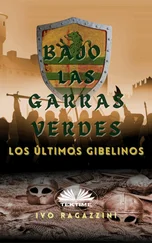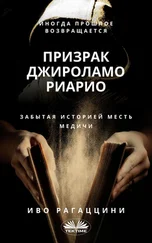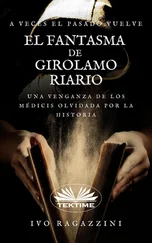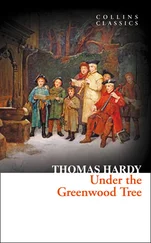Ivo Ragazzini - Under The Green Claws
Здесь есть возможность читать онлайн «Ivo Ragazzini - Under The Green Claws» — ознакомительный отрывок электронной книги совершенно бесплатно, а после прочтения отрывка купить полную версию. В некоторых случаях можно слушать аудио, скачать через торрент в формате fb2 и присутствует краткое содержание. Жанр: unrecognised, на английском языке. Описание произведения, (предисловие) а так же отзывы посетителей доступны на портале библиотеки ЛибКат.
- Название:Under The Green Claws
- Автор:
- Жанр:
- Год:неизвестен
- ISBN:нет данных
- Рейтинг книги:5 / 5. Голосов: 1
-
Избранное:Добавить в избранное
- Отзывы:
-
Ваша оценка:
- 100
- 1
- 2
- 3
- 4
- 5
Under The Green Claws: краткое содержание, описание и аннотация
Предлагаем к чтению аннотацию, описание, краткое содержание или предисловие (зависит от того, что написал сам автор книги «Under The Green Claws»). Если вы не нашли необходимую информацию о книге — напишите в комментариях, мы постараемся отыскать её.
Under The Green Claws — читать онлайн ознакомительный отрывок
Ниже представлен текст книги, разбитый по страницам. Система сохранения места последней прочитанной страницы, позволяет с удобством читать онлайн бесплатно книгу «Under The Green Claws», без необходимости каждый раз заново искать на чём Вы остановились. Поставьте закладку, и сможете в любой момент перейти на страницу, на которой закончили чтение.
Интервал:
Закладка:
So, after having conquered Faenza, Frederick II wanted to raze it to the ground and erase it from the earth, saying all who were against the Faenza who, defeated, were unable to appease his fury in any way and had begun to have it dismantled by teams of scouts.
The people of Faenza, not knowing what else to do, even turned to their nearby enemies from Forlì, begging them to intervene and intercede with the emperor to stop the devastation he was causing to the detriment of their city.
The people of Forlì accepted the requests for help from Faenza and went as a delegation to intercede with the emperor to halt the destruction of the city.
Frederick, not without objections and protests against the people of Faenza, whom he considered traitors, 23finally agreed the city could be spared. However, he imposed that the city should become imperial definitively and should be governed under the banner of a mayor selected from among their Forlì neighbors, since they had helped him and proved to be Ghibellines in heart and soul. So he ordered that the people of Faenza stop doing "Guelph things" and merge with Forlì.
Thus the two cities became, until Frederick's death, two cities united in a small state governed by the same imperial laws and defended by the same arms.
Furthermore, because of their loyalty, Frederick granted the people of Forlì the right to use the black eagle on a gold field 24on their municipal coat of arms and gave them the right to mint imperial coins because of their assistance and loyalty and, for this reason, the people of Forlì proudly left.
Many things changed, however, in 1249, when Frederick II died in Puglia and especially in the following years, when Carlo d'Anjou defeated Frederick II's son, Manfredi, in Benevento in 1266.
Thus the Guelphs, who had been expelled from Florence a few years earlier after their defeat at the battle of Montaperti, began to regain strength in Florence and Bologna. A battle began in those cities for dominance over the Ghibellines, which briefly extended to all of Romagna, with the support of the Church that claimed that land to be hers.
And so, while Carlo I d'Angiò was named pope the imperial vicar of Tuscany, the Tuscan Guelphs returned to Florence and the region, while the Tuscan Ghibellines had to leave and take refuge in Romagna, which remained one of the last of the Ghibelline sites still loyal to the imperial laws in Italy.
6. The dragon, the Guelph cross and the Ghibelline cross
At that time, from 1186, various apocalyptic stories circulating around Italy were attributed to the prophet Gioacchino da Fiore, which spoke of the coming of a dragon with the seven heads of seven antichrists.
Six heads had already been assigned to various historical figures of the past but the last, and most important, was still vacant.
Thus the final missing head of the dragon was quickly attributed to Frederick II, by a certain type of clergy, who believed in the prophecies of Gioacchino da Fiore, because of the fact that, in addition to wanting to reform the church, it was said that he was born out of a union between a prelate and an old nun. Furthermore, Frederick II spoke Arabic, his bodyguards were Arabs and, during the Crusades, he was more concerned with making peace than war in the Holy Land, so much so that he was nicknamed "the Dragon", while other Franciscan and poorer circles of the Church, paradoxically, attributed to him the role of reformer, as the expected apocalyptic persecutor of the corrupt Church and especially of the cardinals.
For this reason many poor friars and priests, and later also white Guelphs, fought in the ranks of the Ghibellines.
The Guelphs used a papal cross as their symbol and flag; while the Ghibellines, while not denying the existence of God, had the reverse an imperial cross with contrasting colors that mirrored the Guelph one and summed up the different philosophy between the two factions.
But how were they made and what was the difference between the two symbols? Let's take a look.
Perhaps the Ghibelline and Guelph crosses arose as symbols, even before the Guelphs and Ghibellines, during the Holy Roman Empire of Charlemagne.
But it was during the struggles of investiture between the papacy and the empire that they developed into a struggle for the right to elect emperors and administrators by the pope and bishops against the right claimed by the emperors to be elected directly by God without the intermediation of the Church.
Both symbols represented the power of God but there were two main ways to represent and understand them.
The first was imperial, that is, the power of God was pre-existent and was granted by Him in person directly to the emperors so that they ruled, already from the time of ancient Rome, long before the coming of Christ and the church.
The other was the power of the Church which, representing the will of God on Earth, acted as a direct intermediary and to whom the power of control by God over men had been granted and it was therefore he who decided whether or not to give it to the emperors.
Various disputes and many religious and military groups arose from these two visions, or philosophies, such as the Carolingians, the Templars, the Guelphs and the Ghibellines.
Two main symbols were used to represent these factions and ideas:
One was the cross of Saint John the Baptist, which was used by the Templars and Ghibellines.
The other was the cross of Saint George employed by the clergy and the Guelphs.
When the nobles and clergy organized expeditions or crusades, they put these flags on their heads that bore white or red crosses, depending on whether the divisions were under the nobles or the church or if emperors or popes had assembled them.
But how were these two flags made and what did they mean?
First you need to know that purple was the official color of ancient Rome and represented the Roman emperors, while white represented the color of God.
The Ghibelline flag of Saint John the Baptist was a large white cross on a completely purple background.
It meant that the imperial red and its nobility were already pre-existing everywhere, in which God then placed his white cross as a guarantee of purity and truth.
Opposite and contrasting in colors and meanings, was the Guelph flag of Saint George, where a purple cross on a completely white field meant that God pre-existed everywhere with his purity and granted a purple cross to the emperor who was therefore subordinate to God and to the Church. In practice, with God's permission, the cross of the imperial cardinal could be inserted in that flag on a white background.
The Guelphs said the church had granted permission through the pope and his bishops from the time of Pope Silvester, when he was crowned Constantine emperor of Rome, while the Ghibellines instead claimed that this was false. 25
Subsequently, there was a split even within the Guelphs into white Guelphs and black Guelphs.
The white Guelphs, while recognizing their fidelity to God, did not recognize it in the wealth and moral corruption of the papacy, while the black Guelphs continued to be loyal to the papacy and the church in all things.
Gradually the white Guelphs simply called themselves the "Whites" and joined the cause of the Italian Ghibellines, while the "Black" Guelphs put themselves at the service of the clergy to make common cause against the Ghibellines and the "Whites".
So to these flags were also added the symbols of the white Guelphs and Florentine black Guelphs, which were nothing more than a white flag with Libertas 26written in silver for the whites, and a black flag with the same word Libertas, in gold, for the Black Guelphs. And incredibly these two coats of arms with the words Libertas belonging to the Whites and the Blacks, are still present today, one, that of the Whites in the municipal coat of arms of Forlì and that of the Blacks is part of the municipal coat of arms of Bologna, which at the time fought each other with no holds barred.
Читать дальшеИнтервал:
Закладка:
Похожие книги на «Under The Green Claws»
Представляем Вашему вниманию похожие книги на «Under The Green Claws» списком для выбора. Мы отобрали схожую по названию и смыслу литературу в надежде предоставить читателям больше вариантов отыскать новые, интересные, ещё непрочитанные произведения.
Обсуждение, отзывы о книге «Under The Green Claws» и просто собственные мнения читателей. Оставьте ваши комментарии, напишите, что Вы думаете о произведении, его смысле или главных героях. Укажите что конкретно понравилось, а что нет, и почему Вы так считаете.










